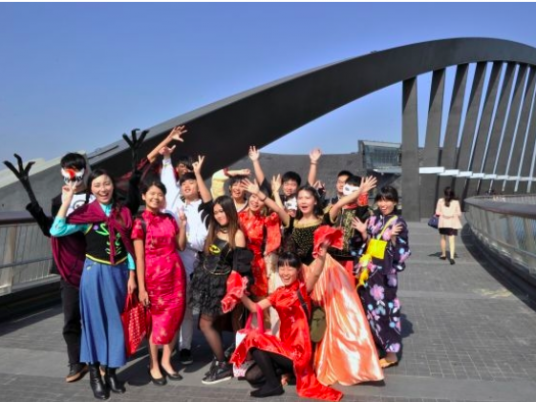
Some of China's most valuable historic artefacts went on display in Taiwan Monday at a new branch of one of the world's top museums, as the island pushes its credentials as a cultural destination.
The 9,000 sq m venue in the southern city of Chiayi is an extension of Taipei's famous National Palace Museum – one of the most popular museums in the world, drawing more than five million visitors each year.
The new attraction opens as Taiwan attempts to diversify its stagnating economy, with tourism a key area for growth, and officials hope the museum will lure more visitors to the rural south.
The opening comes after a catalogue of delays due to flooding, and disagreements with the venue's original architect – it has taken 15 years to complete.
"We hope to attract up to 1.5 million visitors in the first year," said Feng Ming-chu, director of both the Taipei and Chiayi museums.
The new venue will target domestic visitors from the south as well as foreign tourists, with the museum to be included in travel packages, said Feng.
The flagship Taipei museum boasts more than 655,000 Chinese artefacts spanning 7,000 years from the prehistoric Neolithic period to the end of the Qing Dynasty in 1911.
They were removed from the Beijing Palace Museum in the 1930s by China's Nationalist government to prevent them falling into the hands of invading Japanese troops.
The collection was then transported to Taiwan by the Nationalists after they were defeated by Chinese communist forces and fled the mainland in 1949.
Feng was optimistic the new branch would attract visitors, despite the less well-known location.
She compared it France's Louvre museum opening an outpost in the former coal-mining town of Lens.
"We believe the target could be met if taking the French experience as an example."
Stellar exhibits from the Taipei museum will be moved to Chiayi for the inaugural months – including the "jadeite cabbage" sculpture, created in the 19th century by an unknown artist.
The cabbage head with a locust and cricket camouflaged in its leaves has become a favourite with visitors and is seen as an auspicious symbol of fertility.
There will also be South Asian costume, Islamic jades and blue-and-white porcelain from the Ming Dynasty.
Permanent exhibitions include Buddhist artefacts, Asian textiles and tea culture displays.
Designed by Taiwanese architect Kris Yao, the new museum's two stretched, curved buildings include huge walls of glass and are emblazoned with dragons and clouds.
"Hopefully the museum will become a critical factor in Chiayi, to enable the agriculture-based county to transform into a place focused on culture, innovation and tourism," said Chang Hua-kuan, chief of Chiayi county government.
